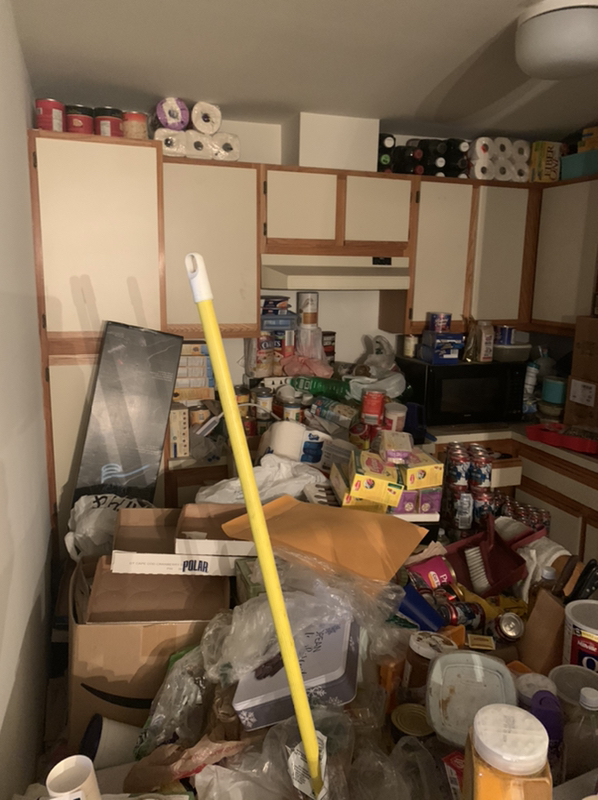
With the convenience of shopping online and bulk warehouses expanding to more towns, it’s easier than ever to purchase items in higher quantities and simply store them at home. But when does our collection of items, home-office clutter and 24/7 shopping habits cross the line into hoarding? It’s first important to understand what the hoarding disorder is and the difference between this psychological disorder and collecting.
WHAT IS THE HOARDING DISORDER
Hoarding is a psychological disorder affecting tens of millions of Americans and characterized by an obsessive desire to over-accumulate items that have little-to-no-value, with the inability to discard them. Everything is coming in, very little is going out. This causes health and safety concerns throughout the home such as blocked exits and entrances, compromised structures, rodent and bug infestations, mold growth, and bathrooms and kitchens that aren’t operational.
The hoarding disorder ranges in both the intensity (filling one room versus the entire home) and also type, such as saving newspapers, rescuing animals, or shopping in excessive bulk. It is often triggered by a traumatic life event such as grief from a deceased loved one, painful divorce, or abuse.
THE FIVE STAGES OF HOARDING
A hoarder’s home is not just a messy space that needs to be cleanup up, but in some circumstances, has structural damage, discarded chemicals and other concerns, making the home a dangerous space. This psychological disorder also causes a hoarder to have a range of emotions such as denial, over-excitement, anxiety and fear, which can deepen over time. It’s important to understand the continuing changes to the home and reactions of the hoarder, as explained in the five stages of hoarding:
Stage One. The home looks relatively normal, with a few piles of items scattered throughout the home, but the hoarder’s habits are becoming problematic. In their mind, the hoarder is experiencing minor anxiety and plans to correct the messy space.
Stage Two. The storage room of the home is full and spreading to other areas of the home. In their mind, the hoarder is aware the space has become cluttered, is embarrassed, and justifying their inaction of cleaning or decluttering.
Stage Three. Entire rooms of the home have become full and inaccessible. The pets can no longer reach a litter box or access door and are using the home’s interior as a bathroom. In their mind, the hoarder’s performance at work may be suffering, and they are sacrificing bathing and eating because they are unable to access a working bathroom or kitchen.
Stage Four. All but one room in the home is full and the hoarder may be limited to a small area of their home for sleeping, eating and bathing. There are structural issues and fire hazards such as blocked exits and entrances, use of space heaters or hot plates as a heating source, improperly stored chemicals, and electrical concerns. In their mind, the hoarder has become depressed and withdrawn from society.
Stage Five. The home has become completely full and is no longer safe. Due to a lack of space and structural damage, the hoarder may be living outside in a tent, car or shed. In their mind, they have become fully withdrawn from friends, relatives and the outside world, except for social services.
COLLECTING IS DIFFERENT FROM HOARDING
Someone suffering from the hoarding disorder is looking for self-worth and happiness in the items they accumulate, but this feeling can be short-lived and requires more and more items to continue the exhilaration. Collecting is done with friends or loved ones, such as providing or receiving a traditional gift on a holiday or special occasion. These gifts or purchases are not done constantly, but rather sporadically or possibly part of a long-standing custom.
A collector’s possessions are also part of a larger set of items and how they are displayed doesn’t obstruct the living areas or their movement through the home. Someone with the hoarding disorder considers the collection to be their family. The items won’t hurt or leave them, and the hoarder will vigorously protect them. A hoarder’s possessions can also become unorganized piles or large stacks that prevent them from freely moving throughout their home and using bedrooms, bathrooms, kitchens, and other rooms as intended.
PROFESSIONAL HOARDING CLEANUP SERVICES ARE AVAILABLE
Cleaning-up the home of a hoarder may seem overwhelming to their friends and family, who often don’t know where to start and the emotions, safety concerns and challenges they will encounter along the way. While removing all items from the home may seem like the easiest solution, it can cause further psychological or emotional harm unless the homeowner actively participates in the process.
Our trained professionals understand that hoarding cleanup is an emotional and stressful situation and we strive to display respect and sensitivity to every customer, while creating a clean, safe and healthy environment. Whether an entire home is filled with debris, or a property needs enhanced decluttering services, we’ll handle all details including cleaning and sanitizing, donation of unwanted items, recycling, odor and mold removal, and disposal of chemicals, biohazards and human/animal waste, with the utmost compassion and care.




